Holy Grail Gobbler
The 2025 spring turkey season kicked off in unforgettable fashion for Florida hunter Justin Strickland when he harvested a rare double-banded Osceola gobbler in the swamps of southwest Florida. For most turkey hunters, harvesting a banded bird is the stuff of dreams — one of those legendary moments that only a lucky few ever experience.
Strickland had been monitoring this particular gobbler for months, studying its movements through trail camera footage. The bird had a shorter beard — roughly 8 to 9 inches — and always seemed to be the first to strut. But when he reviewed photos on March 5, something caught his eye: a faint bluish-green blur around the turkey’s leg.
"Zooming in, I realized the bird was banded," Strickland recalled. "I immediately sent screenshots to my friends, and we started digging through past trail cam pictures. Sure enough, the bands were visible in multiple photos, clear as day."
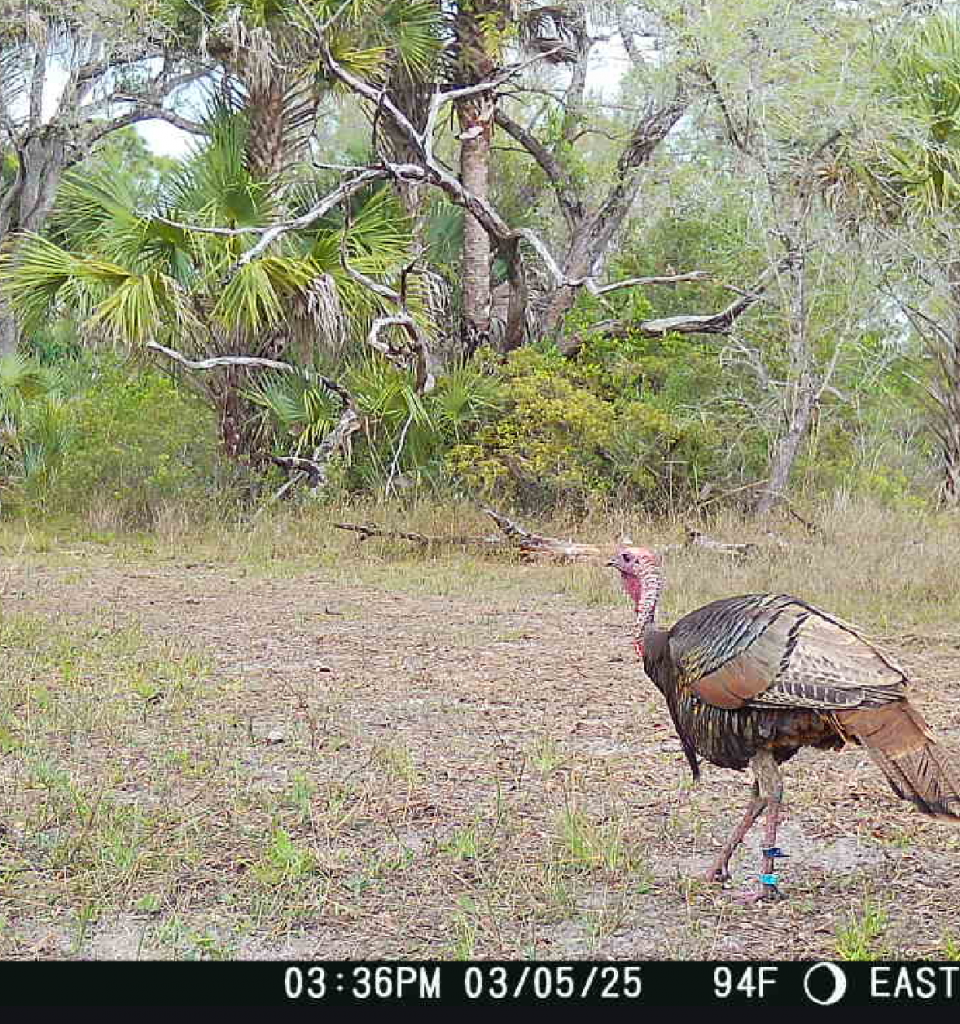
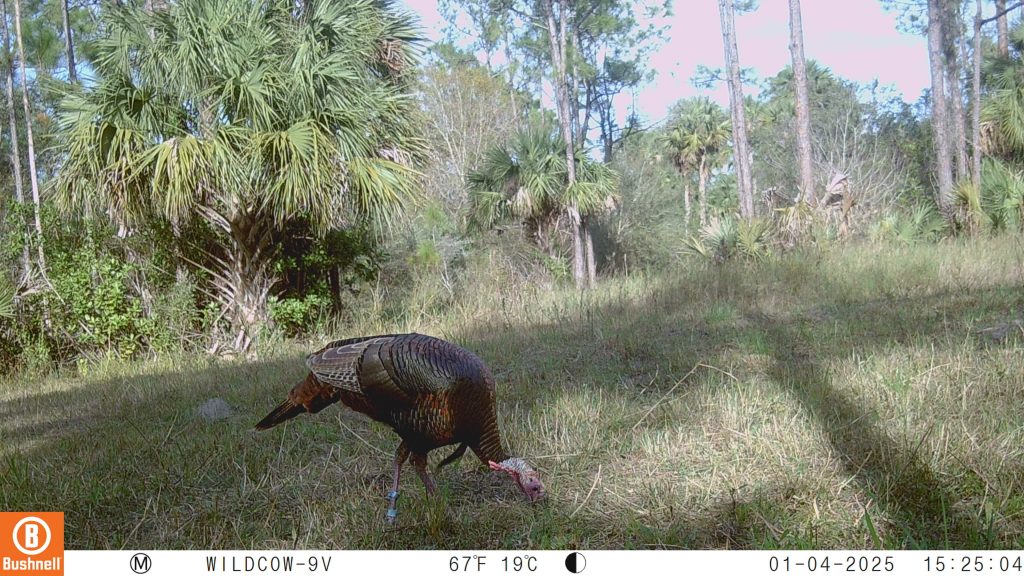
The discovery set his mind racing. He had planned to wait until Saturday to hunt the gobbler, but waiting that long seemed like an eternity.
“What if something happened before I could hunt him on Saturday,” Strickland said. “A hurricane, a poacher or anything.”
By late that night, Strickland had made up his mind.
“I texted a few buddies, and by 9:45 p.m., I had a plan to go after him the next morning,” he said. “Despite my 8:00 a.m. shift at the fire station, I was able to arrange coverage until 10:30 a.m. I barely slept, my mind running through every possible scenario. By 4:00 a.m., I was dressed and ready to go.”
Though his excitement was through the roof, stepping outside the morning of his hunt Strickland’s heart sank.
“The wind was howling at 25 mph,” Strickland said. “I went from 100 to 0 quickly, knowing the time crunch for work we didn’t have all day to sit him out.”
By 5:15 a.m., Strickland met up with his hunting buddies and rode out to their setup spot. The wind was relentless, and the woods were eerily quiet. Then, finally, just as doubt began to creep in, a gobble rang out. It was later than usual, but it was him. The double-banded bird had given away his position.
Strickland played it smart — just a few soft calls, then silence. As expected, the gobbler pitched down onto the road and made his way toward the pond, his usual routine. But something changed. Instead of moving toward Strickland’s setup, the bird turned south and started walking away.
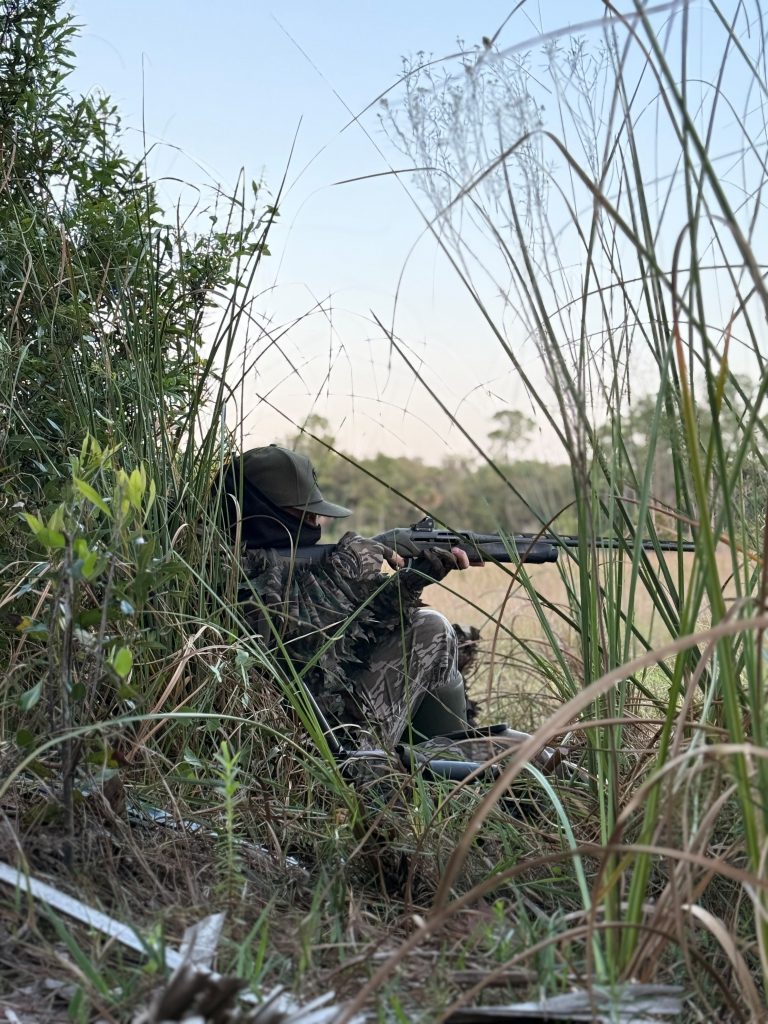
Hope wasn’t lost just yet. Strickland held tight, waiting. At 6:45 a.m., a different longbeard stormed into the field, aggressively trying to breed the decoy at just 10 yards. An impressive bird, but he had only one target in mind.
Then, at 7:20 a.m., another longbeard appeared, half-strutting into the field.
“That’s got to be him,” Strickland thought.
He shouldered his 28-gauge Benelli, resting his binoculars on the stock. Before he could confirm, his friend Nino whispered, “That’s him.”
“The moment I confirmed with my own eyes, my binoculars dropped into my lap, he cleared into my first hole and that’s all she wrote,” Strickland said. “I just harvested my holy grail turkey.”
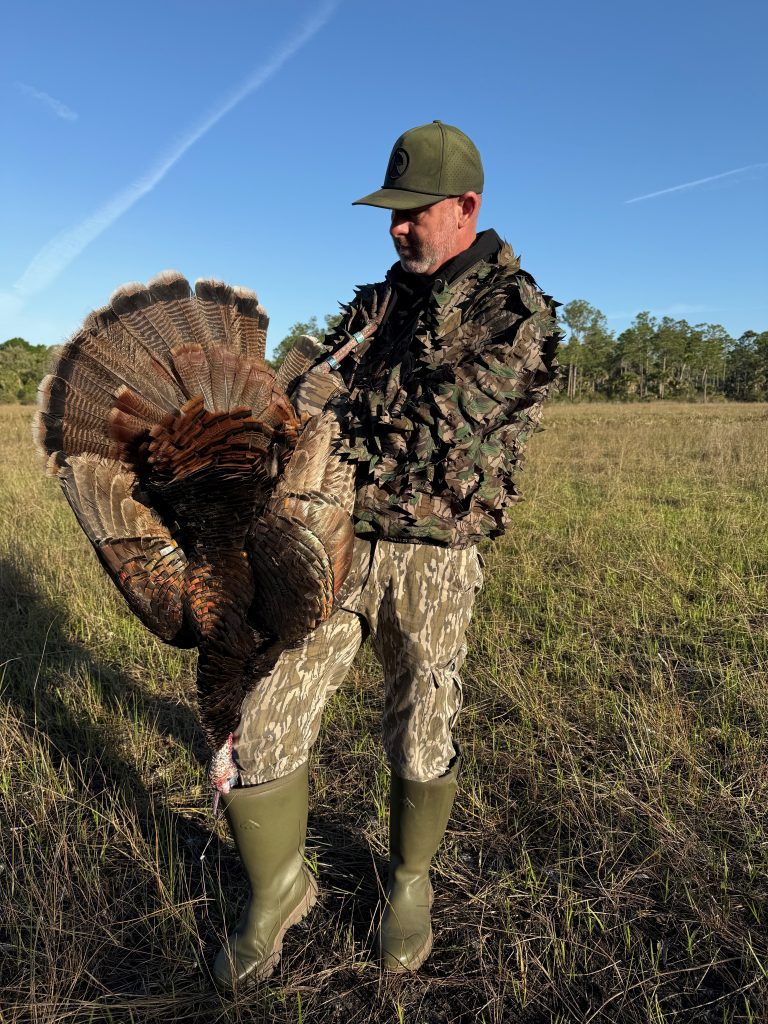
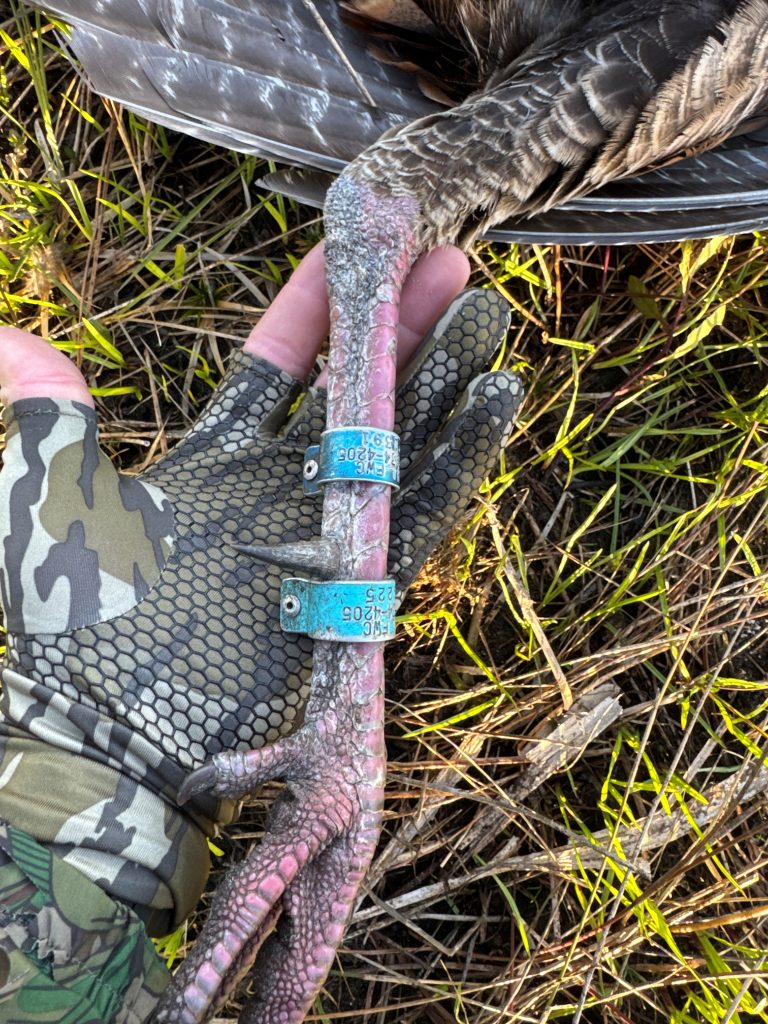
The emotion hit all at once. Strickland took a few steps, then dropped to the ground, overcome by the magnitude of the moment. As the celebration began — calls, texts and video chats with friends — one absence was deeply felt.
“One of my life-long best friends, Robbie Turner, the guy who taught me the ‘real way to turkey hunt’ and took me on my first turkey hunt, I couldn’t call him,” Strickland said. “He passed away a few years ago and was someone who played a very big role in my love and obsession for turkeys. I know he’s with me everyday day chasing these birds, but man to just hear or see the reaction of this bird from him would have been nothing short of epic.”
Strickland’s gobbler wasn’t just any turkey, it was part of a NWTF supported research project conducted by the University of Florida and the Florida Fish and Wildlife Conservation Commission. The study, funded in part through the NWTF’s 2023 Request for Proposals program, aims to gather critical data on Osceola wild turkey populations, including survival rates, nesting habits and the effects of hunting pressure.
Researchers had originally captured Strickland’s bird as a jake, marking it with two distinct colored leg bands — a blue aluminum band stacked over a teal band on its left leg. This specific combination was unique to that turkey, allowing researchers to track its movements and survival.
“This combination and placement is unique to that individual and allows us to identify the individual if resighted through trail camera pictures or personal observation during field work,” said Bobbi Carpenter, Florida Fish and Wildlife Conservation Commission upland game bird researcher. “We use it as a tool to help determine survival, so if a transmitter is no longer working, we still have an opportunity to collect survival data through re-sightings.”
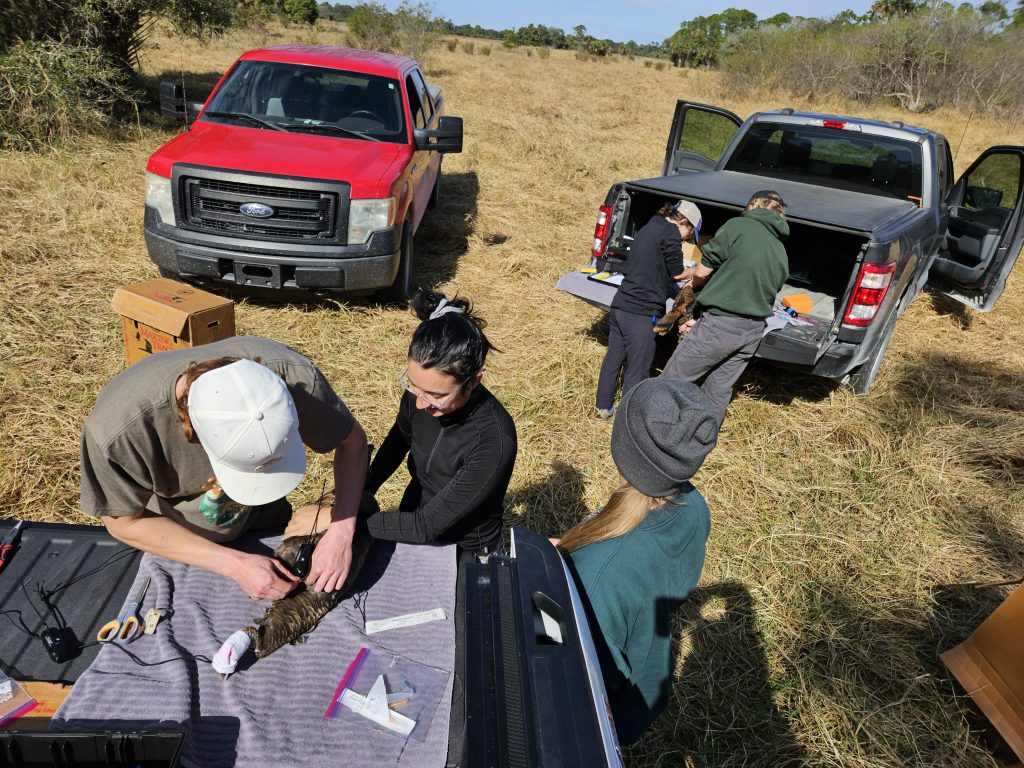
Now in their final season of the three-year research, data collected from transmitters, re-sightings of banded turkeys and hunter reports of banded birds will help inform management decisions regarding the sustainable management of the Osceola subspecies. Hunter reports of harvested birds are extremely important, as it helps researchers better understand the impact of hunting on the behavior of Osceola wild turkeys.
“We value hunter reports, as they also inform us of the survival of our tagged individuals and can be used as a measure of harvest in an area,” Carpenter said. “We enter all the reported harvested banded birds into our long-term survival database. The location of a harvested bird provides us with additional information on the movements of the bird, and information from the hunter can be helpful to determine if the condition of the bird has changed significantly since we captured the bird.”
As a long-time NWTF member, Strickland is proud of the organization’s efforts in Florida.
“I have managed properties for 15 years, and I am very strict on the number of birds harvested on each place every year,” Strickland said. “Once we determine numbers, we either harvest less or that determined number, with no exception to exceed it. I do feel that research is vital to the future of turkey hunting. I’m glad that now in my state you are required to report the harvest.”
While this bird was a personal milestone, Strickland spends most of his turkey hunting seasons focusing on others. Whether it’s mentoring young hunters, introducing newcomers to the sport or guiding veterans and first responders on “Hero Hunts,” his passion goes far beyond pulling the trigger.
"I had mentors along the way, so why not pass it on,” Strickland said. “It’s hard to explain the feeling until you’ve experienced it. I still get the same rush today as I did with the first bird I ever called in to the gun."
As a battalion chief with 19 years in the fire service, Strickland has seen things most people couldn’t imagine. For him, guiding veterans and first responders on turkey hunts has become more than just a way to give back — it’s a personal form of healing.
“For me, the hero hunts give me a chance to introduce people to something they might not normally do,” Strickland said. “It could possibly change their lives and give them an out to release, get away from the outside world and know a group of people are on their team. I’ve built some lifelong relationships doing these hunts, and it’s more meaningful than any amount of money guiding could bring. It’s one of my ways to help myself with the dark things we all deal with.”
Strickland’s double-banded Osceola was more than just a turkey, it was a culmination of years of passion, patience and purpose. A once-in-a-lifetime moment, shared with close friends and the memory of those who helped shape his love for the hunt.
And while this bird will always hold a special place in his heart, for Strickland, the real trophy isn’t on the wall — it’s in the experiences, the friendships and the next generation of hunters he’s helping to inspire.
CONNECT WITH US
National Wild Turkey Federation
770 Augusta Road, Edgefield, SC 29824
(800) 843-6983
National Wild Turkey Federation. All rights reserved.
